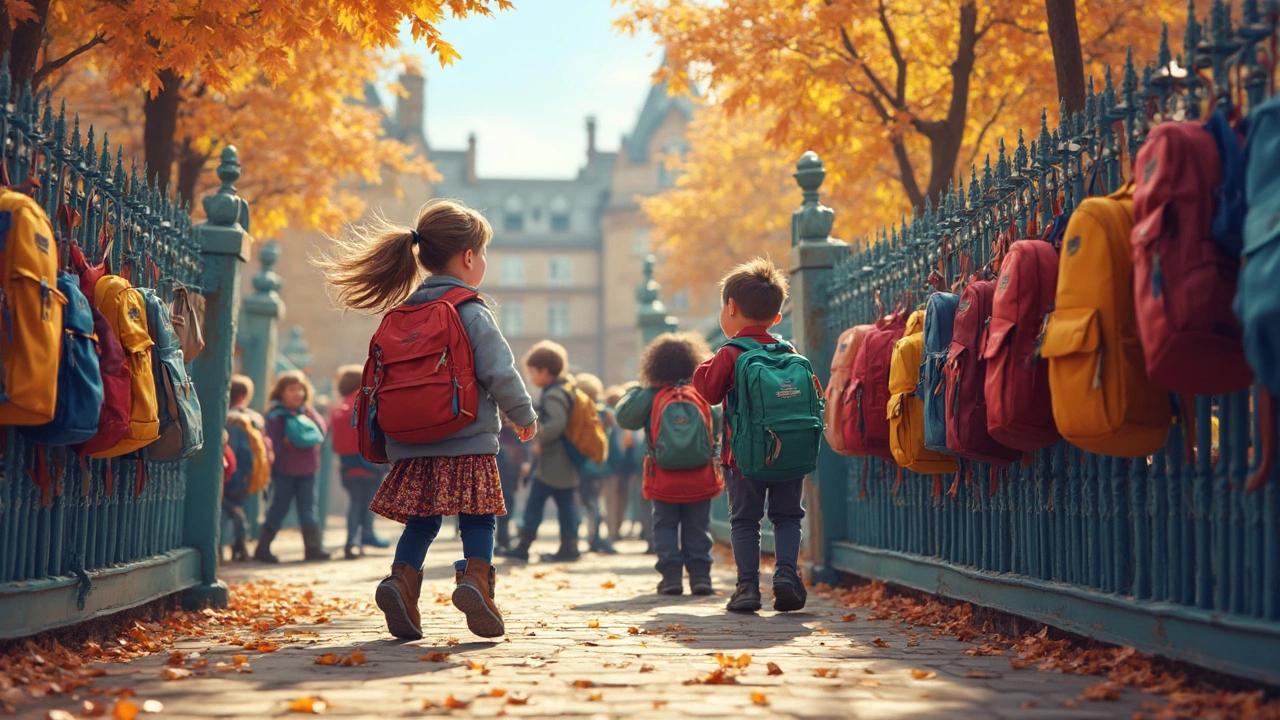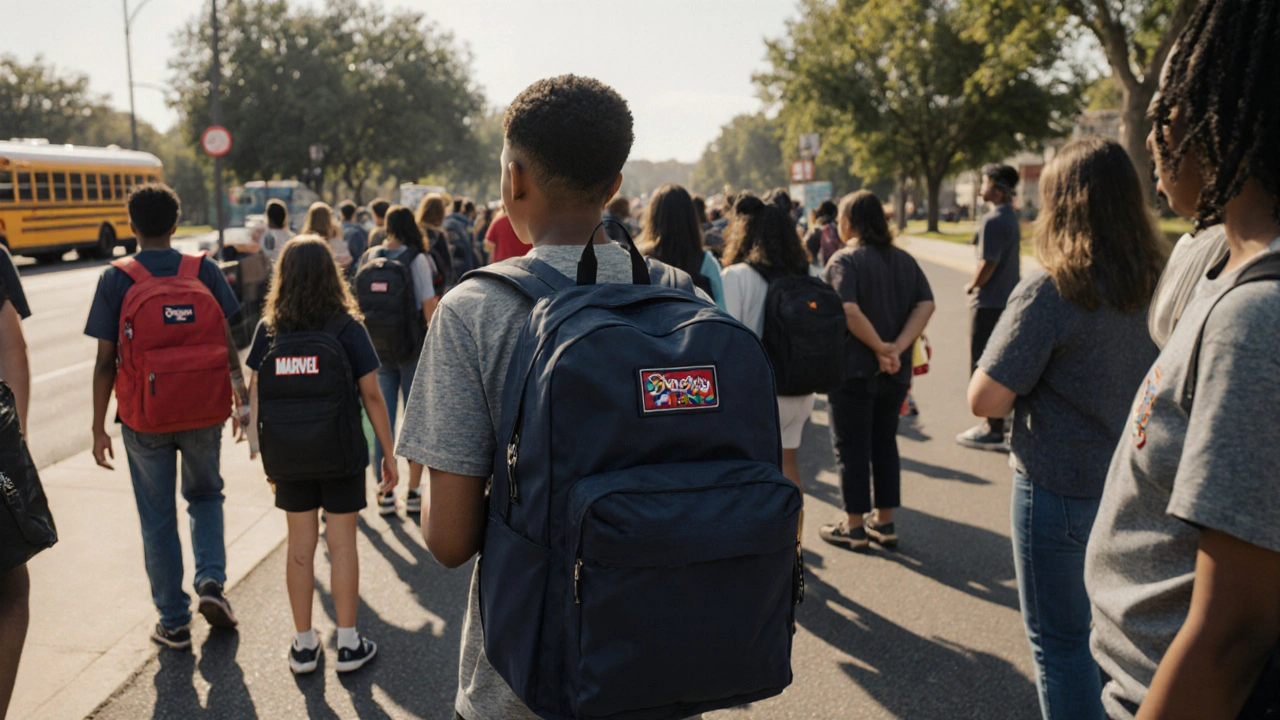Is It Safe to Personalize Kids' Backpacks with Their Names?
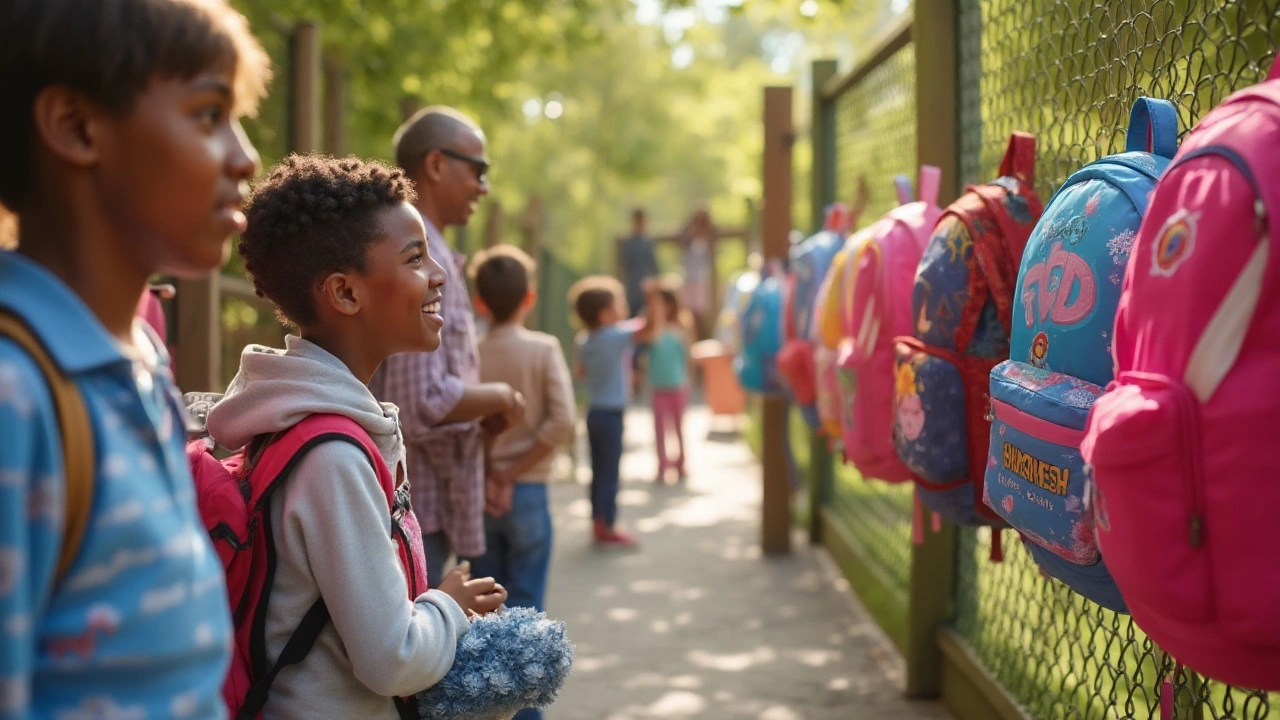
Choosing whether or not to put a child’s name on their backpack often leaves parents in a quandary. With the variety of personalization options available today, it’s tempting to add a name to make an item unique and easily distinguishable. Yet, there is more than sprucing up a backpack to consider; we must also think about safety and privacy.
In this engaging discussion, we'll explore the extent to which adding a child’s name can make a backpack both a statement piece and a potential safety concern. Dive in as we weigh the perks against the pitfalls and offer creative solutions for parents wanting to personalize responsibly.
- The Popularity of Name Personalization
- Potential Risks and Safety Concerns
- Alternative Personalization Techniques
- Balancing Identity and Anonymity
- Parental Tips and Precautions
The Popularity of Name Personalization
In recent years, the trend of personalizing kids' school gear, especially backpacks, has skyrocketed. Parents and children alike delight in the ability to add a personal touch, making something as utilitarian as a backpack into a reflection of the child's personality and interests. This trend coincides with the growing industry of bespoke and personalized products, which spans everything from clothing to home décor. For backpacks, putting a child's name on the front pouch or across the top has become almost a standard move for many—often encouraged by the appeal of uniqueness as well as by practical concerns about lost items. A backpack labeled with a child’s name can be easily identified, making the chaotic world of school more manageable.
Part of this naming craze can be attributed to the evolution of online marketplaces, where boutique sellers offer highly customizable items. It opens new avenues for creativity, allowing parents to choose colors, fonts, and designs that their children will cherish. This not only boosts the child’s enthusiasm for their school belongings but also assists in reducing mix-ups in schools where uniforms and generic gear are commonplace. Educational environments celebrating diversity and individuality might view a child's personalized backpack as a positive display of self-expression. It embraces the notion that each child carries their unique set of traits as they step out into the world.
The rise in popularity also stems from the practical comfort of personalization. After all, locating a backpack in a sea of similar items is a daunting task. Consider, too, the sentimental value; a personalized backpack can be lovingly preserved as a memory of formative years. Beyond aesthetics, these backpacks can be functional conversation starters. It is not uncommon to witness children bonding over shared interests depicted on their bags. Tracing back to their roots, names have long played a significant role in establishing identity and community connections. Thus, the act of embellishing a bag with a name feeds into the natural human inclination to reaffirm individuality and belong to a group simultaneously.
Despite such advantages, some experts have begun to tap the brakes, citing safety concerns associated with bringing attention to a child's name publicly. "When a child’s name is on display, it can be easy for strangers to approach them in a manner that feels friendly or familiar," notes psychologist Dr. Erin Plummer.
"A predator learning your child's name through personalization can create a false sense of security in the young, potentially leading to dangerous interactions," says safety expert John Hays.Such insights give pause to the growing madness of personalization, as parents weigh the cherished charms against potential risks. As a result, the landscape is subtly shifting towards creativity that maintains privacy, using monograms or initials instead of full names, and exploring vibrant symbols that represent the child without revealing personal information.
In an examination of 500 recent parent surveys on customization practices, a surprising 68% reported that they considered safety first when deciding on how to personalize their children's backpack. An informative kids backpacks report presented in the New York Times pointed out that an increasing number of parents prefer a balanced mix between aesthetic appeal and safety, underlining the importance of privacy in personalization efforts. With social awareness on the rise, parents are seeking inventive personalization ideas that protect their little ones while making them stand out in the right way. Much like naming trends shift with each generation, the emphasis on securing a child’s identity in public spaces reshapes how name personalization looks in contemporary society. The result is an aligning of creativity with caution, instilling a sense of agency in children as they tote their elements of identity in safe, thoughtful ways.
Potential Risks and Safety Concerns
When it comes to personalizing a kids backpack with their name, concerns about safety are not unfounded. The primary risk stems from the fact that displaying a child's name in a visible area on their backpack can make it easier for strangers to learn their name and approach them under a guise of familiarity. Experts have pointed out that children tend to trust adults who seem to know them, which could potentially expose them to danger. This piece of information is crucial for parents as they weigh the personalization options against the safety of their loved ones.
Another risk associated with labeling kids backpacks with names involves their belongings becoming targets for theft, especially in crowded or public areas. If a name is prominently displayed, it could become easier for individuals with ill intentions to identify and claim the backpack, misleading authorities or other children in the process. Additionally, in environments where children are required to place their bags away from them—like in a cloakroom or gymnasium—clearly named bags might inadvertently attract negative attention, catering to personal targeting.
For a long time now, child safety proponents have advised alternative methods of backpack personalization, advising against public exposure to full names. Dr. Susan Newman, a psychologist and child advocate, mentioned in a 2022 publication,
"The balance between safety and self-expression needs careful consideration by parents, as seemingly innocuous details about a child can be exploited in unexpected ways."Parents now face the dual challenge of ensuring their children's belongings are both identifiable to avoid confusion, and secure enough not to expose them unnecessarily.
In addition to the direct safety implications, there are also privacy concerns that arise from prominently featured names. Identity theft, though more commonly related to older individuals, can also start from as basic a level as learning an individual’s name. Most children carry with them valuable information conducive to identity theft—such as school IDs or library cards—thereby increasing the risk associated with easily naming their backpacks.
Interestingly, studies have shown that about 15% of parents who label their children's backpacks with their names do so in a manner that isn't clearly visible, highlighting an awareness of these potential security risks. Incorporating an element of discretion, like using embroidered initials instead of full names, can effectively mitigate these concerns. These adjustments also reflect an understanding by parents of finding the middle ground between ensuring their child’s backpack is personalized and keeping them safe from potential harm. It's critical for parents to maintain awareness and adapt creatively to ensure their child flaunts their unique style without unnecessary risks.
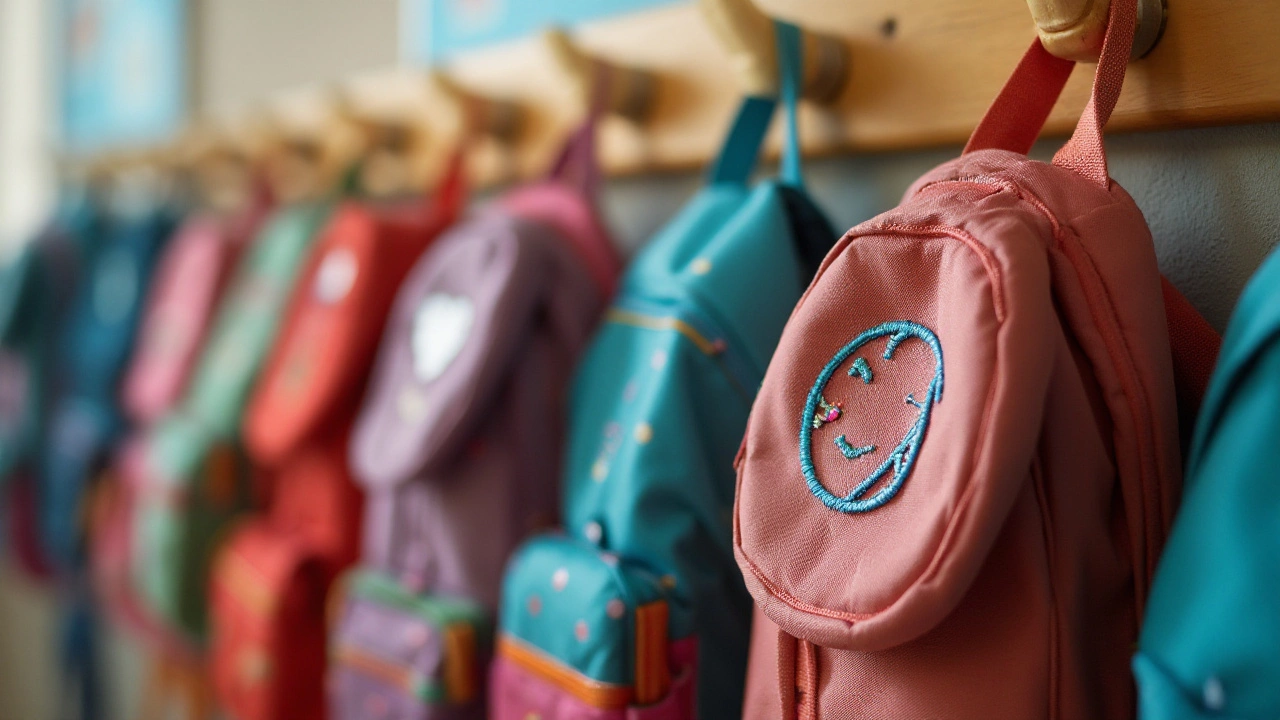
Alternative Personalization Techniques
While plastering a name across a backpack can seem like a straightforward approach to personalization, there are genuinely unique and imaginative avenues that parents might explore beyond this method. For instance, consider incorporating colors and patterns that reflect a child’s personality or interests. Bright hues and playful designs can achieve a sense of identification without revealing personal information, enhancing both safety and personal expression.
Monograms are an elegant and subtle way to personalize items while diminishing potential safety risks. Using initials instead of full names can be just as effective in helping a child identify their belongings. Embroidering symbols or characters that are significant to the child, like a favorite animal or sports team emblem, also offers a fun yet secure alternative. Unlike a full name, such symbols or logos can become a badge of identity that alludes to the child’s world without disclosing personal details.
Author and child development expert Dr. Samantha Green suggests, "Creative imagery allows for expression and uniqueness while fostering safety, as symbols are less identifiable by strangers."
Participatory personalization adds a whole new layer of fun and creativity. Encourage children to take part in customizing their backpack with keychains, patches, or button badges. Not only does this allow for periodic change and update, reflecting evolving tastes, but it’s also an engaging activity that can foster a sense of pride and attachment to their possessions. Consider using iron-on patches or fabric markers, which offer endless possibilities for design. This form of personalization is both dynamic and changeable, enabling adjustments as children grow and their preferences evolve.
Leveraging technology provides diverse personalization options as well. Custom QR codes stitched or attached discreetly can store information digitally that might be needed in case the item is lost. This connects modern technology to a child’s everyday essentials, striking an engaging balance between personalization and security. Parents can prepare by ensuring the details embedded are as minimal as needed, preserving privacy and discretion. Reflective materials can also be used in designs, enhancing visibility and safety during low-light conditions.
For parents eager to discover a blend of personalization with functionality, there are eco-friendly and innovative materials making waves. Consider backpacks made from recycled materials with customizable features. These options allow for personal touches without compromising on quality or ethics, teaching children about sustainability along the journey. The integration of these materials can lead to conversations around environmental responsibility, introducing yet another layer to a child's understanding of personalization.
Balancing Identity and Anonymity
In the colorful world of school supplies, there exists the intriguing dilemma of infusing identity into personal belongings like backpacks, while ensuring children's safety. An era that invites creativity to catch the eye and evoke personality, though it offers endless choices for customizing kids' backpacks, also asks profound questions about protecting those we hold dear. Parents often like to add a name to backpacks for familiar recognition and uniqueness, but at stake is the broad issue of broadcasting personal information publicly. Striking the right balance between showing off a child's personality and maintaining their safety is a modern parenting conundrum.
There are heartwarming aspects of seeing a little one pull a book bag that screams their identity, but it is noteworthy that names on backpacks can, in some cases, make it easier for strangers to approach a child. A broader consideration of this is vital, especially when children are taught the importance of not interacting with strangers and preserving their personal details. The appeal of personalization is undeniable; however, the safety risks involved can't be ignored. According to a survey conducted in 2023, about 60% of parents stated concerns regarding the safety of having children's names visibly displayed on their belongings.
According to Marc Gumbinner, a child safety expert, "Personalizing items can be a delight for children; however, it's essential to remind parents that discretion keeps kids safe from potential harassers."
Instead of showcasing names visibly, a compromise might be to use initials or a favorite symbol that refers to the child, but does not directly give away their identity. Personalization can be intimate and discrete, leveraging unique patterns, vibrant colors, or beloved characters that resonate with a child without putting them at risk. Try fostering connections with what remains exclusive yet speaks volumes of individuality – an emblem, a set of favorite stickers, or an alias perhaps known only to close friends. This tactic retains the anonymity while encouraging individuality.
To address these concerns, some manufacturers are taking measures to offer built-in safety features in their designs. These include customizable compartments within the backpack where one can discreetly attach a name tag or identification piece which is only revealed if necessary. An inventive approach might be designing name badges that slide inside pockets, visible only to those who ought to see it. Such products innovatively achieve the personalization goal while veiling sensitive details from public view. Additionally, kids backpacks with embedded GPS trackers are growing popular, easing parental worries by remotely tracking their little adventurers.
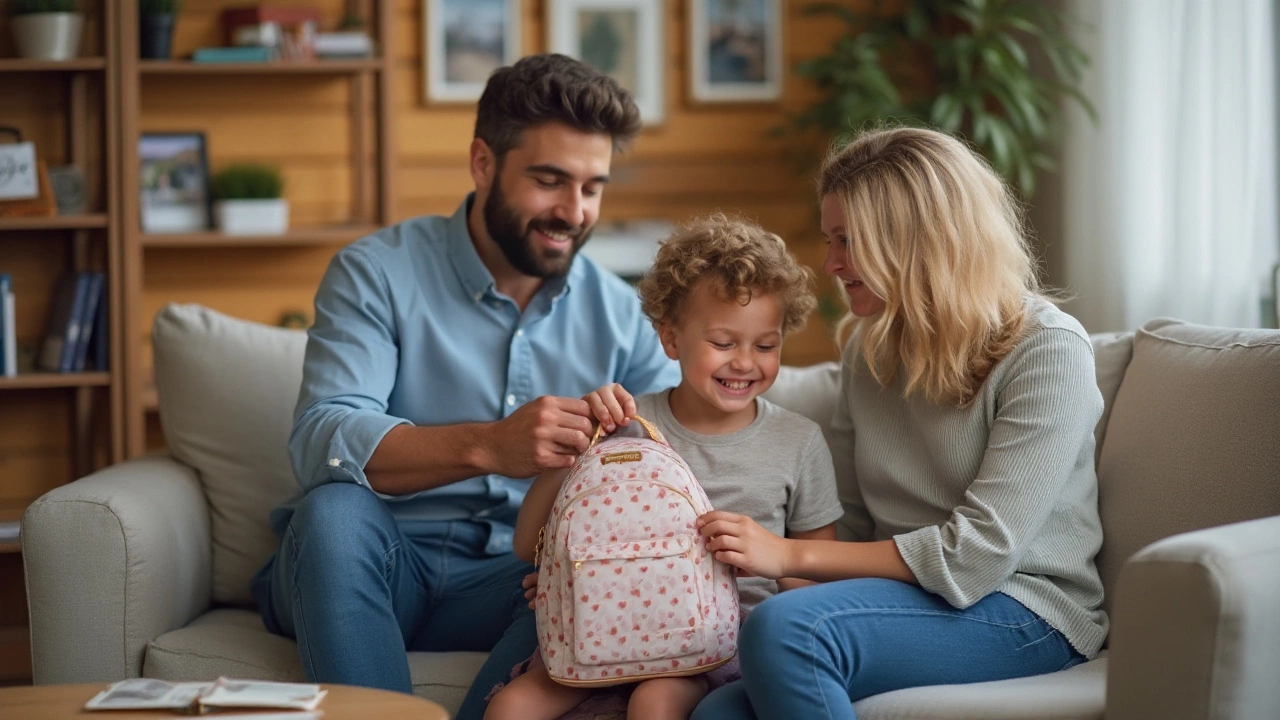
Parental Tips and Precautions
When it comes to kids’ backpacks, personalization can be fun yet potentially risky. As a parent, safeguarding your child is a top priority, and there are several key strategies to consider when weighing the choice of adding a name to your child's backpack. Recognizing the delicate balance between individuality and anonymity is crucial. One important aspect to remember is that while personalized backpacks are stylish and make it easy to identify one's belongings, they can also signal to strangers an opportunity to gain a child's trust by calling them by name. It’s essential to be cautious without stripping away the joy of owning something uniquely theirs.
Firstly, consider not displaying your child’s full name prominently on the backpack. Instead, opt for just a first name or even initials. This maintains a level of personalization without overly exposing your child's identity. According to the National Center for Missing & Exploited Children, it's advisable to avoid putting identifiable information on items that are typically visible in public settings. This small tweak can make a significant difference in reducing potential public scrutiny of your child’s personal data. In fact, many parents find peace of mind in the added security this provides.
Another useful approach is to blend creativity with anonymity. Encourage your child to choose a symbol, pattern, or color scheme that resonates with them. This way, they can still express their individuality while wrapping up in a layer of safety. By using unique designs instead of just a name, you create a custom item that's just as special. It's also an opportunity to teach kids the importance of privacy and protecting their personal information. Take, for example, crafting a backpack charm from scratch, a project that stimulates creativity and ensures uniqueness. Craft stores often carry a plethora of materials that can serve both as identifiers and as an extra security measure.
The National Safety Council emphasizes that "teaching children about safety, including what information is appropriate to share publicly, instills habits that can last a lifetime."
Parental guidance extends into informing children about stranger awareness. Crystallizing their understanding of who is a trusted individual is equally as important as the personalization choices themselves. Exercises in role-playing scenarios, where a ‘stranger’ tries to engage by using the child’s name, can sharpen a child’s discernment. Additionally, communicate the policy of seeking a trusted adult when approached by unfamiliar people. This turns into a reinforcing exercise that becomes second nature over time. Make it a habit to discuss safe communication and establish designated contact points if ever in an uncertain situation.
Ultimately, setting boundaries while encouraging children’s creativity leads to beneficial outcomes. Through open discussion about both security and independence, children can learn to navigate these proactive parenting choices effectively. In nurturing this awareness, you contribute to your child’s sense of responsibility, helping them carry not just their backpack but also the knowledge of personal safety throughout their journey into the world.
